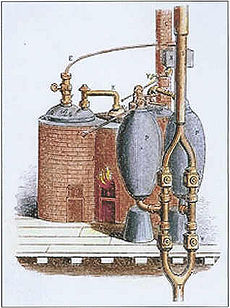World history/WHME101/Scientific and industrial revolutions/Overview
In this learning pathway you will learn about the Scientific and Industrial Revolutions. The Scientific Revolution began in Europe in the sixteenth century, and continued until the late eighteenth century. Modern science emerged and developed in this period, with great progress in the fields of mathematics, astronomy, physics, human anatomy, biology and chemistry. The Scientific Revolution transformed understanding of nature and society. In England, new scientific knowledge contributed to the beginnings of the Industrial Revolution. New manufacturing processes were developed, and there was a transition from hand production of goods to mechanical production. Inventions such as the steam engine and cotton gin changed the way goods were produced, the volume and cost of goods available, and labor practices. Peasants began to leave farming life for new manufacturing jobs in cities. The Industrial Revolution began in England, and many key technological innovations originated in Britain. England's leading role in the Industrial Revolution made it the most powerful and wealthy nation on the globe by the early 1800s.
During this learning pathway students will watch a video about the Scientific Revolution, and complete a number of readings about the Scientific and Industrial Revolutions. Students will engage with a primary source document about the Industrial Revolution.
